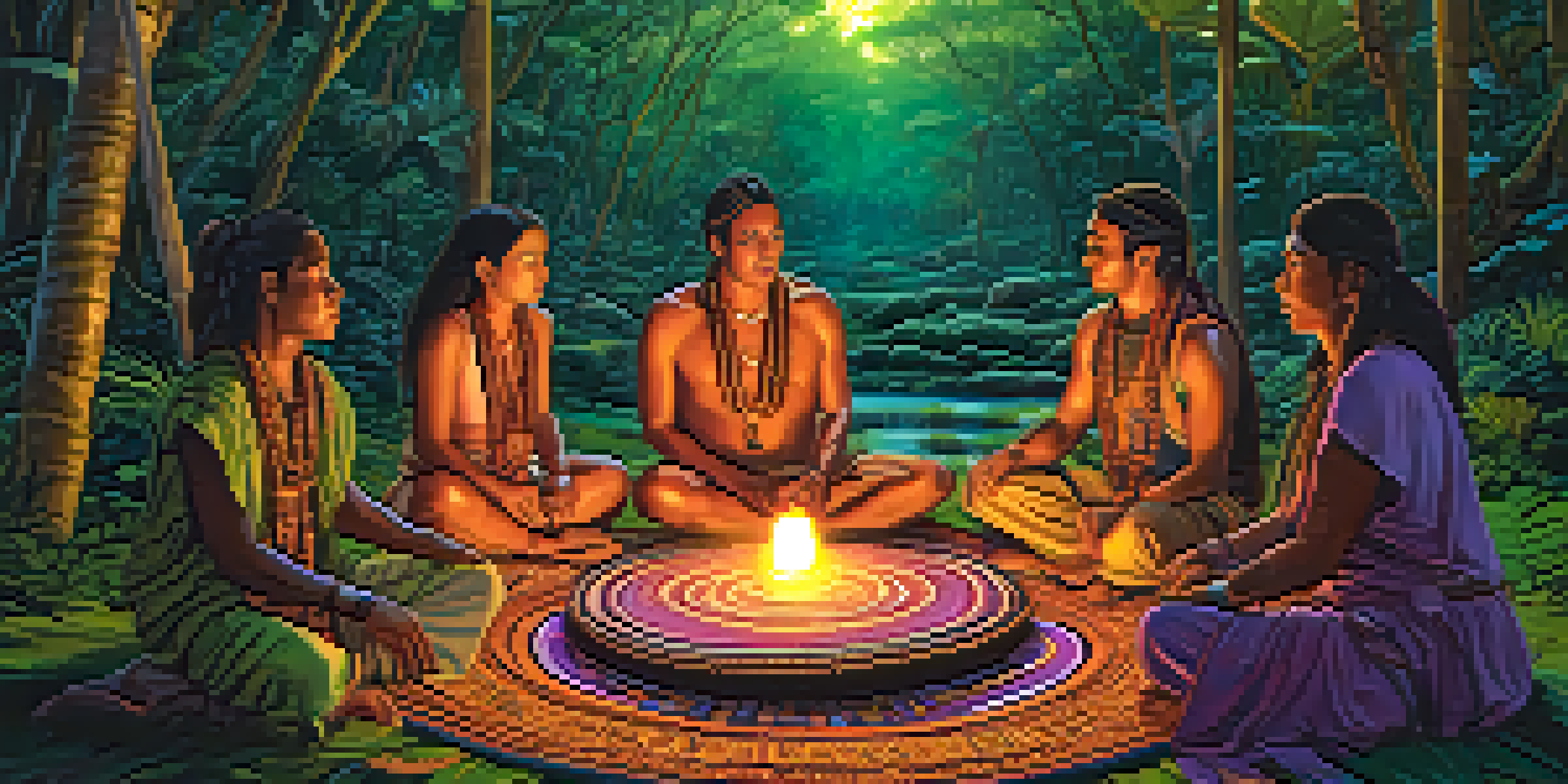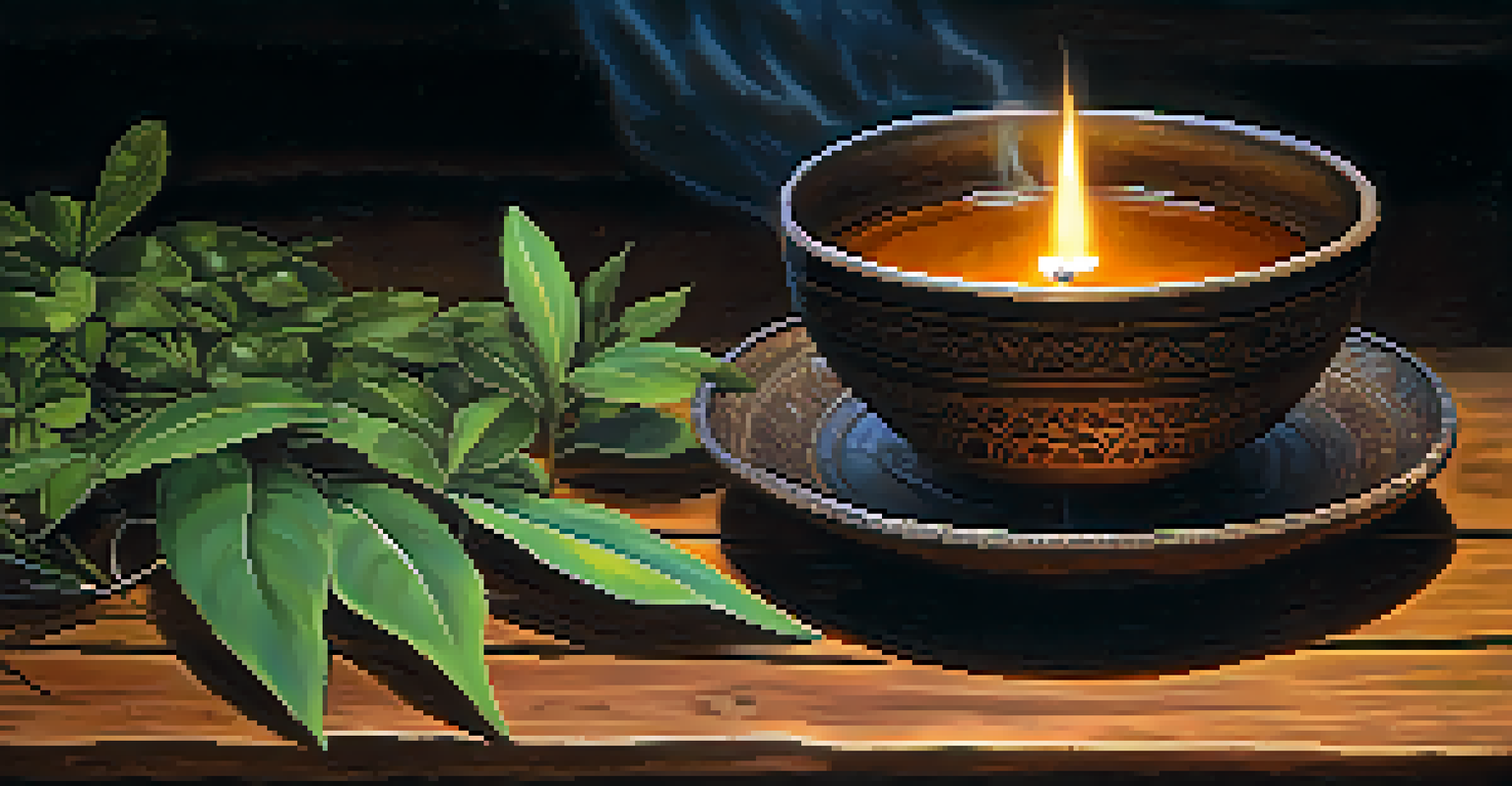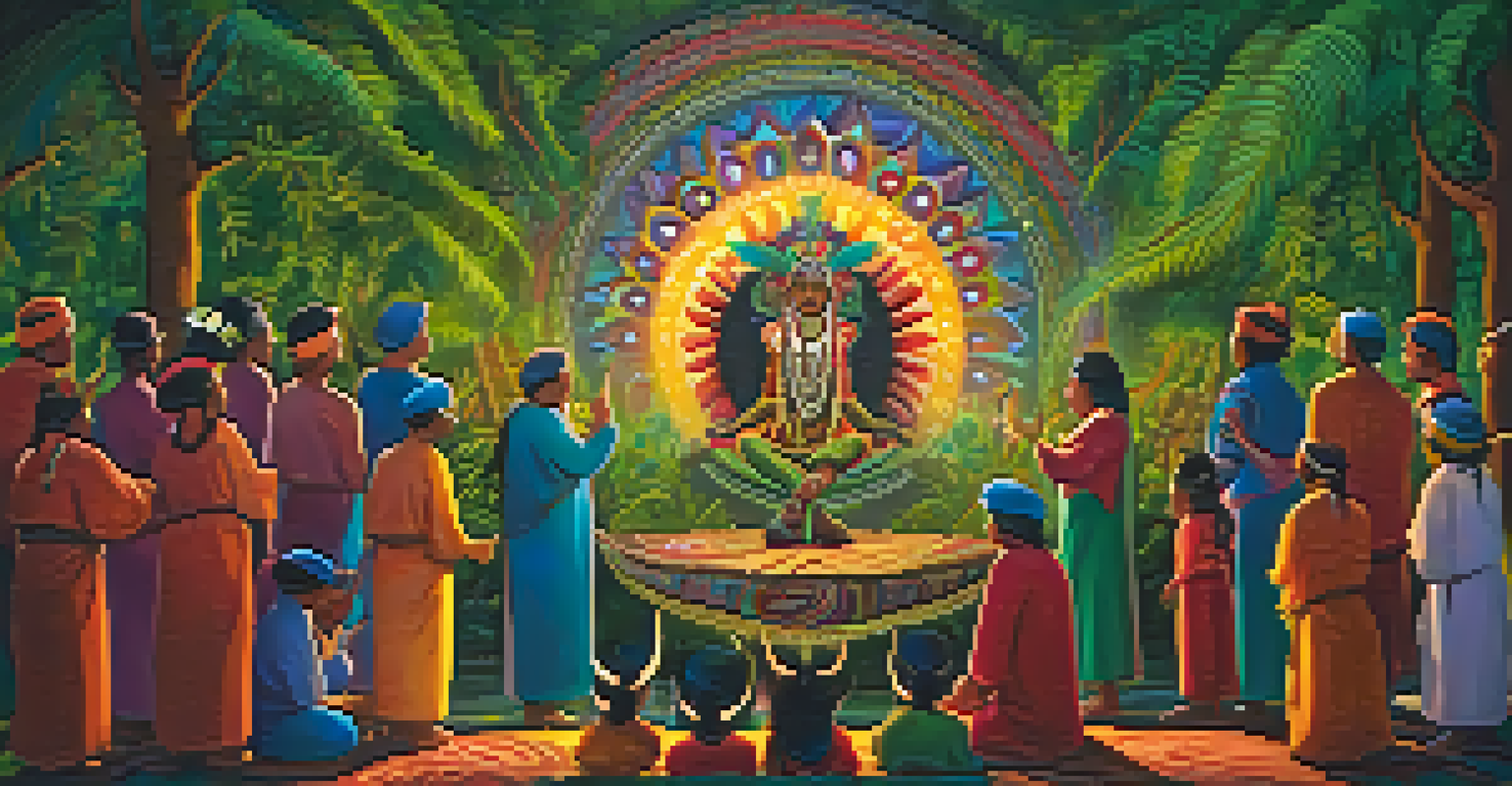Ayahuasca and Shamanism: Historical Perspectives and Practices

Understanding Ayahuasca: A Sacred Plant Brew
Ayahuasca is a traditional brew made from the Banisteriopsis caapi vine and the Psychotria viridis leaf, known for its psychoactive properties. Used primarily in Amazonian cultures, this concoction has been a pivotal part of spiritual rituals for centuries. The brew is renowned for inducing altered states of consciousness, which many believe facilitates deep spiritual insights and healing.
The plant is a teacher. It can show you the dark and the light, and it can help you to understand yourself and your place in the world.
The preparation of Ayahuasca is both an art and a science, often requiring expert knowledge passed down through generations. It’s not just about mixing plants; the shaman's intent, experience, and the specific ritual context also play critical roles. This process elevates Ayahuasca beyond a simple drink to a powerful tool for personal transformation.
In recent years, the global interest in Ayahuasca has surged, with many travelers seeking authentic experiences in remote jungles. While this has sparked a greater appreciation for indigenous practices, it also raises important questions about cultural appropriation and the commercialization of sacred traditions. Thus, understanding Ayahuasca requires respect for its cultural roots.
The Role of the Shaman in Ayahuasca Ceremonies
In Ayahuasca ceremonies, the shaman, or 'curandero,' acts as a spiritual guide, facilitating participants' journeys into their inner selves. With extensive training and a deep understanding of the plant's effects, shamans manage the emotional and psychological landscapes that arise during the experience. Their role is vital in ensuring safety and emotional support throughout the ceremony.

Shamans often use traditional songs known as 'icaros' to guide participants. These melodies are believed to carry healing energies and help create a connection with the spirit world. The shaman’s voice, combined with the sound of instruments like drums and rattles, fosters a sacred atmosphere that can lead to profound insights and healing.
Ayahuasca's Cultural Significance
Ayahuasca is deeply rooted in indigenous cultures, serving as a vital tool for spiritual identity and communal bonding.
Moreover, the relationship between the shaman and the community is deeply rooted in trust and respect. Participants often come to view shamans not just as healers but as custodians of ancient wisdom. This dynamic is crucial for the authenticity and effectiveness of the Ayahuasca experience.
Historical Roots of Ayahuasca and Shamanism
The historical roots of Ayahuasca can be traced back thousands of years to indigenous tribes in the Amazon basin. Archaeological evidence suggests that the use of psychoactive plants for spiritual practices predates written history, making it a significant aspect of the cultural heritage in the region. These ancient traditions have evolved over time, shaping the practices we see today.
We are not separate from the plants, the animals, or the earth. We are all interconnected, and through Ayahuasca, we can remember that truth.
Shamanism itself is not exclusive to the Amazon; it has been practiced globally in various forms. However, the unique blend of spirituality and herbal medicine found in Amazonian shamanism highlights a distinct approach to healing and personal growth. This cultural richness is what attracts many to explore Ayahuasca today.
The intersection of history, spirituality, and ecology plays a crucial role in the continued relevance of Ayahuasca. As modern society grapples with mental health issues, the ancient practices surrounding Ayahuasca offer alternative perspectives on healing that resonate with many people seeking answers beyond conventional medicine.
Cultural Significance of Ayahuasca in Indigenous Communities
For many indigenous communities, Ayahuasca is more than a means of achieving altered states; it is a vital part of their cultural identity and worldview. The brew is often used in communal ceremonies that reinforce social bonds and cultural traditions. These gatherings serve as an opportunity for storytelling, healing, and collective growth.
The spiritual teachings derived from Ayahuasca experiences are integral to the cultural narratives of these communities. Elders often share the wisdom gained from their own journeys, reinforcing the importance of ancestral knowledge and the interconnection of all life. This aspect of cultural significance plays a crucial role in preserving traditions for future generations.
Role of Shamans in Healing
Shamans act as spiritual guides during Ayahuasca ceremonies, using their knowledge and traditional songs to facilitate healing and insights.
However, the encroachment of modernity and globalization poses challenges to these indigenous practices. As interest in Ayahuasca grows worldwide, it becomes increasingly important to honor and respect the cultural contexts from which it originates. Advocating for indigenous rights and sovereignty is essential to ensuring that these sacred practices continue to thrive.
The Modern Ayahuasca Movement and Its Impact
The modern Ayahuasca movement has gained traction in recent years, drawing individuals from diverse backgrounds seeking spiritual growth and healing. Retreat centers have sprung up in various parts of the world, often led by indigenous shamans or trained facilitators. This phenomenon reflects a growing desire for alternative spiritual practices that diverge from mainstream religion.
While many participants report transformative experiences, the commercialization of Ayahuasca raises ethical concerns. The influx of tourists can sometimes lead to exploitation and a dilution of traditional practices. It’s essential for those seeking these experiences to research carefully and approach the subject with cultural sensitivity.
Furthermore, the integration of Ayahuasca into modern therapeutic practices shows promise, with some mental health professionals exploring its potential benefits for conditions like PTSD and depression. This intersection of ancient wisdom and contemporary science could pave the way for more holistic approaches to mental health care.
Scientific Perspectives on Ayahuasca and Its Effects
Scientific interest in Ayahuasca has grown as researchers seek to understand its psychoactive effects and potential therapeutic benefits. Studies have indicated that the brew may have neuroprotective properties and could help promote neurogenesis, the process of forming new neurons. These findings suggest that Ayahuasca might play a role in mental health treatment, although more research is needed.
Moreover, the experience of consuming Ayahuasca is often characterized by intense emotional releases, vivid visions, and a sense of connectedness. Psychologists and neuroscientists are intrigued by how this brew can facilitate such profound experiences, leading to insights that many participants describe as life-changing. Understanding these effects could bridge the gap between ancient practices and modern psychological theories.
Modern Interest and Ethical Concerns
The growing global interest in Ayahuasca raises ethical questions about cultural appropriation and the commercialization of sacred traditions.
However, it is crucial to approach the scientific study of Ayahuasca with caution, as individual experiences can vary widely. While some may find healing and clarity, others may confront difficult emotions or unresolved traumas. This complexity underscores the importance of conducting research within the context of appropriate guidance and support.
Navigating the Future of Ayahuasca and Shamanism
As interest in Ayahuasca and shamanism continues to grow, navigating the future of these practices will require balance. On one hand, there is a need for greater awareness and respect for the cultural origins of Ayahuasca, ensuring that indigenous communities benefit from the global interest. On the other hand, there is a genuine desire for personal growth and healing among those who seek these experiences.
One potential path forward is fostering collaborations between indigenous leaders and modern practitioners. By creating spaces for dialogue and shared learning, both sides can contribute to a richer understanding of Ayahuasca's role in contemporary society. Such partnerships could promote sustainability and preservation of traditional practices.

Ultimately, the future of Ayahuasca and shamanism will be shaped by the choices of both participants and practitioners. By prioritizing respect, education, and ethical considerations, we can honor the legacy of this ancient brew while exploring its potential in a modern context.